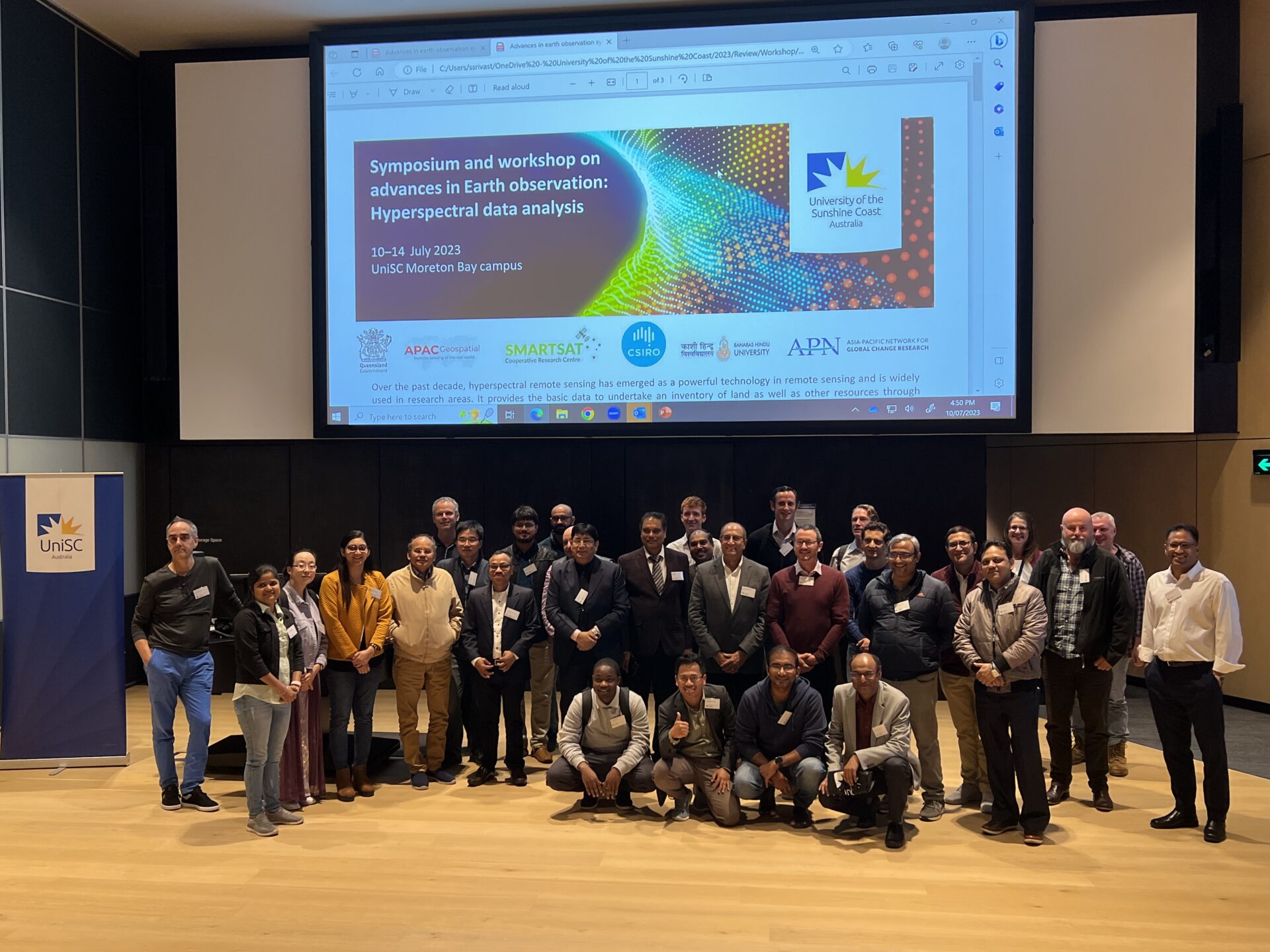The Queensland Earth Observation Hub (QLD EO Hub) held a workshop in Brisbane recently to present the preliminary findings from an Earth Observation (EO) market engagement study, across a wide range of EO and Industry sectors, about the challenges and opportunities Queensland faces in embracing EO technologies, data, and workflows now, and into the future.
The Market Study undertook a broad-scale consultation across urban and rural Queensland, and across the pipeline of data and service providers, end users, and those considering the use of EO in the future. The study was seeking to deeply understand Queensland’s EO community’s current capabilities, challenges, and opportunities as well as the vision we have for what the future could look like. Preliminary findings of the study were shared with participants who were able to discuss and provide feedback. The biggest opportunities reported in the next 2-5 years were:
- Collaboration and alignment between research, industry, and government. This includes improving communication to increase awareness of needs and capabilities and promoting the transfer of skills and knowledge.
- Commercialisation of research. This includes facilitating research-industry partnerships to provide pathways for industry uptake of research outcomes.
- Building capacity in Queensland to cater to national and international markets, by promoting Queensland’s capabilities, connecting industry to these markets, and attracting investment.
- Workforce development, by facilitating access to new and in demand skills, knowledge transfer, and promoting EO careers.
The findings from this study and workshop will be used to develop a strategy and roadmap which will guide the role that the Queensland EO Hub can play to unlock the future of the downstream EO sector now, and over the coming years. It is expected that SmartSat will release the full report in the coming months.
A symposium on Advances in Earth Observation: Hyperspectral data analysis was also recently hosted by University of the Sunshine Coast with support by the QLD EO Hub and SmartSat. The aim of this symposium was to unveil the advances in remote sensing through lectures, demonstrations and hands-on training that helped the participants gain an understanding to deal with spatial data using remote sensing tools for various applications. This event also provided attendees with demonstrations and hands-on training on tools such as R, and ENVI for hyperspectral image analyses and their real-world applications.
Our Chief Executive Officer, Professor Andy Koronios, provided a presentation about the different activities carried out by SmartSat in the field of water quality, including the AquaWatch mission and the upcoming Kanyini mission through which the use of the Hyperspectral Imager for EO with onboard Artificial Intelligence and Internet of Things connectivity will be deployed.
 Attendees at the Symposium and workshop on Advances in Earth Observation: Hyperspectral data analysis at the University of the Sunshine Coast.
Attendees at the Symposium and workshop on Advances in Earth Observation: Hyperspectral data analysis at the University of the Sunshine Coast.
Dr Jasmine Muir also provided a detailed overview of the SmartSat CRC’s Maya Nula program and how this program aims to develop continent-wide crop and yield monitoring capabilities. Special acknowledgements go to Associate Professor Sanjeev Srivastava (University of South Australia) and Dr Prashant Kumar Srivastava (Banaras Hindu University, India) for their contributions and leadership of the event. Dr Srivastava’s attendance at the event was supported through the SmartSat Visiting Fellowship scheme.

Andrew Beveridge
Chief Operating Officer